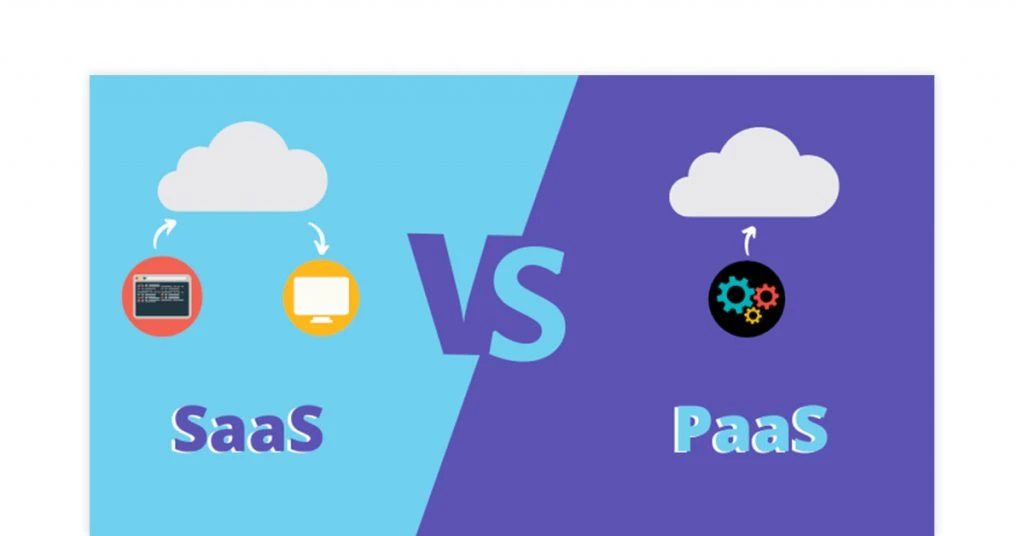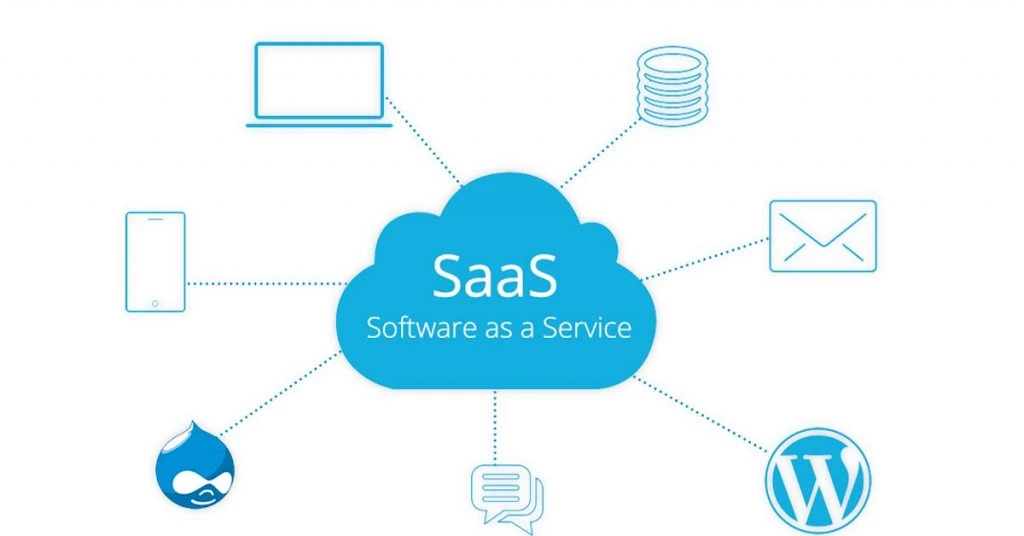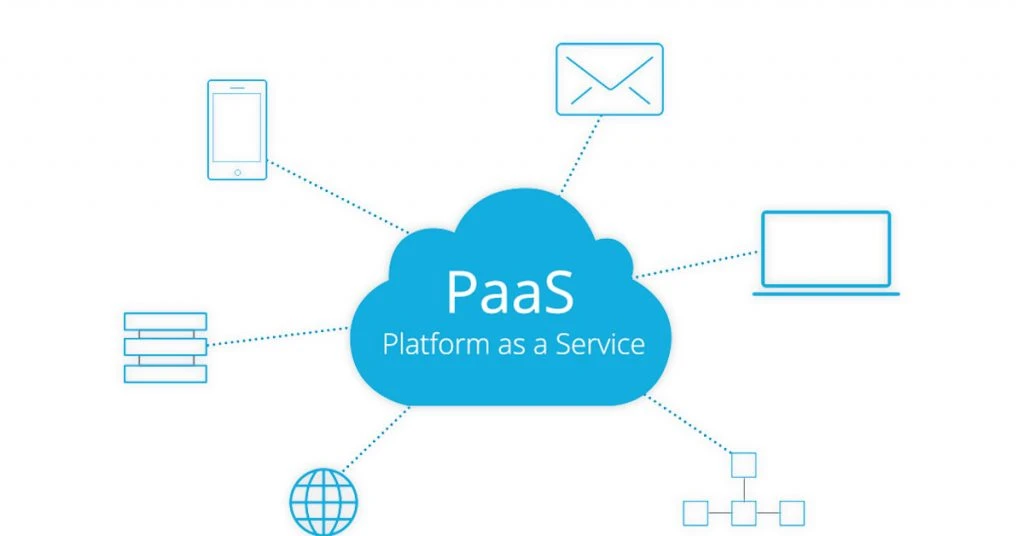Are you an entrepreneur thinking to take your startup to the next level through cloud services?
Well, every business from small ones to global giants is considering this.
But firstly, you must select the right cloud service for yourself so that you can efficiently use your resources and time to build the desired applications and manage the existing ones. Well, we are here to assist you in doing the same.
We will be discussing the two most popular cloud services, SaaS and PaaS based on their characteristics, advantages, limitations, delivery, and differences.
What Is SaaS?
SaaS full form is Software as a Service, a ready-to-use cloud-based service that can directly be accessed on a web browser. You do not have to make any additional installations or downloads on your system to use SaaS. Your IT team just has to manage the allocation of licenses and share access to designated employees. It is completely managed by a third-party vendor, who ensures automated updates.
What Is PaaS?
PaaS full form is Platform as a Service a cloud computing model that provides a framework using which organizations and developers can use high-end hardware and software tools on the cloud. While using this cloud management service, developers need to focus on building the application without worrying about managing the operating systems, updates, or any other infrastructural requirements.
What Differentiates PaaS from SaaS?

Although both the cloud computing models might seem similar, SaaS and PaaS difference is mainly based on their characteristics, usage, control, and cost. Let’s check out the differences between SaaS vs PaaS.
Characteristics of PaaS Vs SaaS
Characteristics of SaaS in Cloud Computing
- Delivers software using the internet
- Directly available to the end-user
- Is hosted on a remote server by a third-party vendor
- Scalable for small, medium, and large- size enterprises
- Cost includes security, maintenance, and compliance
Characteristics of PaaS in Cloud Computing
- Delivers high-end software and hardware on cloud
- Used by application and web developers
- Gives developers the option to choose from various tiers as per requirement
- Offers flexibility to build your own app and customize it
- A cost-effective option.
The major difference is that SaaS only delivers software, whereas PaaS delivers software as well as hardware. On the one hand, where SaaS provides you with a ready-to-use product, PaaS provides you the tool to create unique applications.
Advantages of SaaS Vs PaaS
Here are the advantages of SaaS and PaaS:
Advantages of SaaS
- SaaS does not require any additional installations or downloads on any device
- Offers role-based logins to access various levels
- Is accessible on any device that is connected to the internet
- Information will be available when you log in to the account online
- It follows a pay per user cost model
Advantages of PaaS
- Provides a platform to create customizable and unique applications
- Is time-efficient and cost-effective for developers
- Developers can create a personalized application without worrying about the coding as well.
- Saves huge amount of cost on software and hardware required for app development and testing
- It follows a pay per usage model
Both the cloud services deliver their respective advantages. SaaS provides a ready-to-use product, whereas PaaS provides a platform where developers can build their own unique apps.
Examples of PaaS and SaaS
Examples of SaaS
- BigCommerce
- GSuite
- Dropbox
- Salesforce
- Cisco WebEx
Examples of PaaS
- Amazon Web Services (AWS)
- Magento Commerce Cloud
- Windows Azure
- Google App Engine
- Heroku
Suggested Read: What is SaaS in Cloud Computing and How It Works
Delivery of PaaS vs SaaS
SaaS, being a ready-to-use application, doesn’t require installation or download of additional software. Everything is taken care of by the SaaS vendor such as technical issues, data transfer, storage, required servers, etc. SaaS vendors also take care of upgrades and support that the users require.
Whereas, PaaS provides you a canvas in form of a platform where you can create your own application using the internet. Your developers can collaborate to create an application of their choice with complete freedom to experiment.
Limitations: SaaS or PaaS
Here are the limitations of SaaS and PaaS:
Limitations of SaaS
- Interoperability: Sometimes SaaS is not designed for quick integration with other business systems and your organization might face integration issues. In this case, your organization will have to design customized integration systems or compromise with SaaS dependencies.
- No Standard APIs: Often vendors don’t follow standard APIs and tools while designing the application, which makes it difficult for you to switch to other vendors without in-house rework. It seems easy to use a ready-to-use application, but it is often difficult to get out of one.
- Data Security Challenges: Storing your confidential information on public SaaS means compromising data security. Even the transferring of heavy data that is required to perform the necessary functions of an application requires additional cost.
- Customization: SaaS offers minimal customization as the majority of SaaS is not open source. This creates problems for many businesses. This limits your business with specific functions, performance, and integrations to the ones that are provided by your vendor.
Suggested Read: Top 23 SaaS Companies in India in 2021 That are Going Global
Limitations of PaaS
- Risk of Data Security: Although PaaS offers you maximum customization, still your confidential data is stored on third-party cloud servers. This may limit your security options to only specific vendor-provided hosting options only.
- Customizations: To work with PaaS cloud services, your current legacy apps may require certain customizations and configuration changes. It may limit the value of PaaS investment and may result in a complex IT system.
- Issues with Runtime: Even after being customized PaaS may not be optimized for the choice of your language and framework. As a result of this end-users may not be able to develop complete dependencies on the cloud service.
Managed Resources: SaaS or PaaS
When SaaS and PaaS are compared regarding managed resources:
How to Manage Resources with SaaS?
With SaaS, end-users do not have to manage anything on remises. Third-party vendors manage data, applications, storage, servers, virtualizations, networking, operating systems, and a lot more.
How to Manage Resources with PaaS?
PaaS users need to manage data and applications. Everything else is managed by the PaaS vendor.
PaaS Vs SaaS: Comparison Table
| Basis | SaaS | PaaS |
| Stands for | Software as a Service | Platform as a Service |
| Used by | Businesses and end-users | Developers |
| Technical Knowledge | No special technical skills required | Knowledge of the subject and basic setup is required |
| Model | A service model in cloud computing that delivers host software to the end-user. | A cloud computing model that delivers tools for developing applications. |
| Access | Gives access to the end-user | Provides access to run time environment for tools required to develop applications. |
| Delivery | Delivers software over the internet via a third-party vendor | Delivers software and hardware over the internet |
| Supported Device | Web browser and smartphone | Web browser |
| Cost | Pay per user | Pay per usage |
Suggested Read: 10 Best SaaS Tools for Startups and SMBs in 2022
When to Use SaaS over PaaS?

SaaS is best suitable for startups and small enterprises that are looking forward to the best accounting, CRM, HRMS, POS, and other solutions without making an upfront investment. SaaS ensures the simple implementation of applications on your device or can be accessed on any web browser. Your employees can manage SaaS solutions with minimal training. It is great for startups and other small businesses to automate their processes with minimal subscription costs.
When to Use PaaS Over SaaS?

If you are looking for great customization options and want multiple developers to work on an application, then definitely you should choose PaaS. This helps project managers in streamlining the app development process and provides great speed and flexibility. PaaS can help you in simplifying some challenges that may come when you start building an application from scratch.
In a Nutshell: SaaS (Software as a Service) vs. PaaS (Platform as a Service)
The cloud computing models, SaaS and PaaS serve totally different requirements. If you are a user who wants to use specific software on your web browser, SaaS is the right choice. SaaS allows users to access s software like HRM CRM, Billing, Accounting, etc on the cloud. However, if you are a programmer and you want to develop, deploy and test any software or application on the cloud then PaaS is the right model. In short: SaaS allows users to access software on a cloud while PaaS helps to build software on the cloud.
Suggested Read: How Cloud-Based SaaS Software helping Hotel Industry?
FAQs:
Why Use SaaS over PaaS?
SaaS offers ready-to-use applications for end-users, and you don’t need any special technical knowledge to use it.
Why use PaaS over SaaS?
PaaS offers you great customizations options as compared to SaaS and allows developers to build creative and unique applications.
Is PaaS less scalable than SaaS?
Yes, as compared to SaaS, PaaS is less scalable. SaaS can be easily be scaled as per your business requirement.
What do PaaS and SaaS stand for?
PaaS full form is Platform as a Service, while SaaS full form is Software as a Service.
What is PaaS technology?
PaaS (Platform as a Service) is a cloud computing technology that allows users to develop, test and deploy programs and applications over the internet. Google App Engine, Windows Azure, and AWS Elastic Beanstalk are significant PaaS examples.
Is Gmail SaaS or PaaS?
Gmail is an email service provider as a SaaS platform. Since users can access Gmail on the web through any device anywhere, it is one of the most common examples of SaaS.
Is PaaS or SaaS better?
SaaS and PaaS are two entirely different cloud computing technologies used for different purposes. SaaS is a better model if you want to use any software like HR, CRM, or POS on the cloud. The PaaS model allows users to develop, deploy, and test programs and applications on the cloud.
What is an example of PaaS?
Amazon AWS is one of the most common examples of PaaS. Microsoft Azure, Google Cloud, IBM Cloud, and Oracle Cloud Infrastructure are major PaaS hosting providers.
Isha’s writing journey started way back in 2018 when she graduated in the field of Journalism & Mass Communication. Since then, she has been writing for all digital and print marketing assets including blogs, editorial reviews, landing pages, emailers, and more. She has contributed her writings to genres... Read more

















